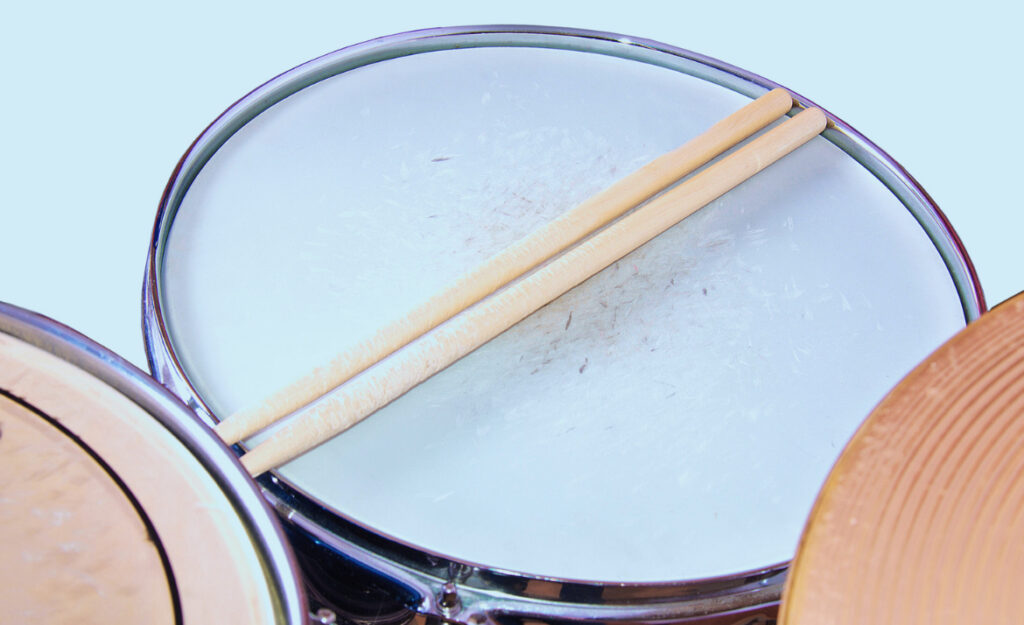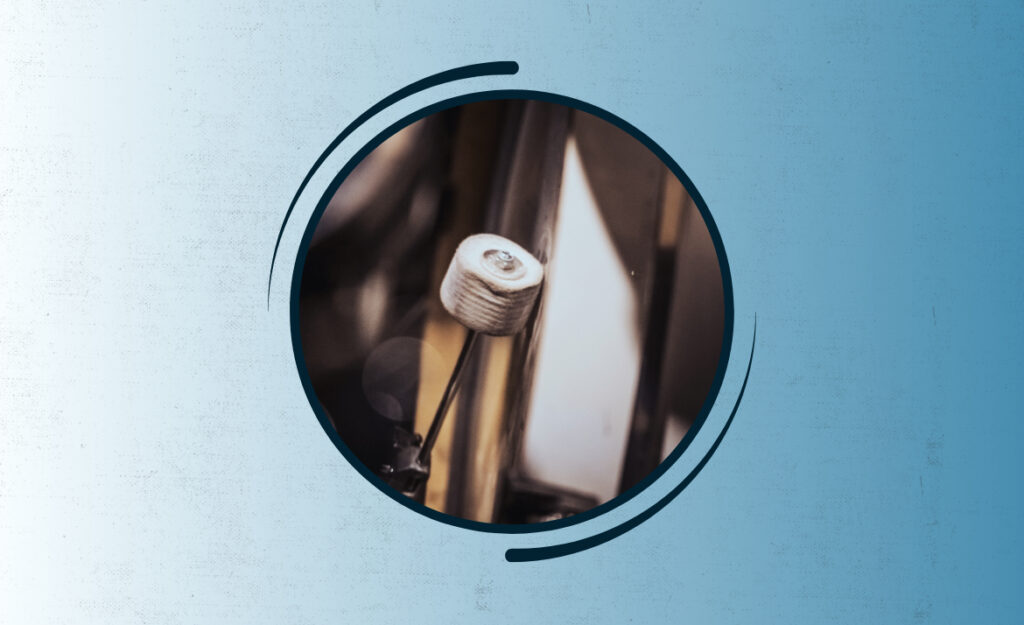Nothing beats the snap of a well-tuned snare drum. When you put care into every detail, from lugs to wires, you begin to hear that signature crack. If you’re chasing consistency, exploring snare drum care isn’t just routine; it’s part of your voice behind the kit.
Regular upkeep does more than extend a snare drum’s life. It shapes each hit’s clarity, allowing your playing to shine in any style. Snare drum care anchors your daily drumming, invisible but crucial for crisp, lively tones.
Let’s break down actionable snare drum care habits and setups so every rimshot hits with precision. Whether on stage or in the practice room, your snare drum can stay sharp and responsive. This article details exactly how.

Daily Wipe-Downs Preserve Sensitivity and Crispness
Wiping your snare drum daily locks in sensitivity. Sweat, dust, and grime dull resonance surprisingly fast, but a few seconds with a microfiber cloth can keep your drum sounding fresh and articulate.
Consistency is key to protecting both look and sound. By making cleaning a part of your post-practice routine, you’ll notice less grime building up around tension rods and lugs, which impacts tuning and projection.
Technique: Fingerprints Off, Sound Stays
Fingerprints and oils from your hands mute overtones and reduce snap. Check your shell under a bright light—if you see smudges, swipe them gently with a slightly damp cloth for instant results.
Commonly, residual stick marks on coated heads can also be gently wiped away without removing any coating. Use a circular motion to avoid damaging the surface. Your drum maintains brightness and the head lives longer.
If your finish is lacquered or wrapped, always use a soft cloth—never paper towels—to avoid surface scratches. These scratches collect dust and sweat faster, undermining both tone and appearance over time.
Mini-Checklist: Fast End-of-Session Care
Have a dedicated cloth in your stick bag. Each time you pack up, wipe down the top head, shell, and all hardware. This quick step prevents sticky residue and keeps your snare gleaming after every set.
Don’t forget to gently wipe under the snare wires, too. Dust and rosin can clog these, reducing their response. A quick pass beneath them makes a noticeable difference in clarity as you play the next day.
As a bonus, use this downtime to glance at tuning rods and hardware for loose parts—a second now can prevent a failed lug or detuned drum later.
| Care Task | Recommended Tool | Frequency | Takeaway |
|---|---|---|---|
| Wipe Down Shell | Microfiber Cloth | Every Session | Prevents buildup, maintains look |
| Clean Hoops | Dry Cloth | 2x per Week | Avoids rust, aids rimshots |
| Snare Wire Dusting | Soft Brush | Weekly | Sharpens snare response |
| Head Swipe | Slightly Damp Cloth | Every Session | Extends head life, keeps brightness |
| Lug Inspection | Eye/Hand Check | Every Session | Prevents unwanted detuning |
Seasonal Tuning: Adapting to Room and Weather Changes
Retuning your snare drum with each season ensures the crack remains lively despite ambient shifts. Temperature and humidity directly affect head tension. This process keeps your snare drum care routine proactive, not just reactive.
Reevaluate your tuning after moving between venues or climate zones. Head and shell materials expand or contract, changing response. When your snare suddenly loses its bite, adjust tuning before changing any gear.

Cymbal Maintenance Tricks Drummers Use
Discover cymbal maintenance routines used by experienced drummers to keep the shimmer lasting longer.Fall and Spring: Transitional Techniques
In the fall, indoor humidity often drops, tightening heads unexpectedly. Slightly loosen your snare batter by a quarter turn per lug. You’ll regain warmth without sacrificing attack.
- If your shell feels cold, acclimate your drum indoors before tuning. Adapting too soon can result in uneven tension and a boxy sound—wait at least 30 minutes for best tuning stability.
- Always tune using even, opposite lugs. This prevents warping and creates a balanced snare voice, even as materials shift with the seasons. A drum key with a built-in tension gauge can help keep it consistent.
- During spring, as humidity returns, inspect heads for wrinkles or sags. Tighten gently and evenly; avoid cranking too high too fast, as that chokes the drum’s crack and leads to premature head wear.
- In home studios with changing climate, track room humidity. Instruments respond noticeably at 40% or lower—consider adding a room humidifier or silica gel packs inside your case to stabilize.
- Sit with your snare between legs and lightly tap near each tension rod to check evenness. This tactile feedback exposes micro-detuning others miss, giving your crack and ghost notes precise clarity with every change of season.
Finish every seasonal tuning by playing a simple paradiddle between center and edge. Listen for even stick response. Slight tweaks now mean punchier hits and fewer surprises under stage lights later.
Quick-Step: Last-Minute Venue Tweaks
If a club feels damp or dry, check your snare between songs. Quarter-turn lugs that feel slack or overly tight. Small changes ensure your crack cuts through in any setting.
- Before live sets, use a drum dial to measure and match head tension. This tool saves time and prevents guesswork, especially in noisy, bustling venues.
- Bring a spare batter head and key in your stick bag. If a head feels wonky even after tuning, swap in a fresh one—this instantly revives sharpness and playing feel.
- Keep a silica packet or two in your snare’s case, especially for travel gigs. Absorbing excess moisture avoids rusted hoops and sluggish responses far from home.
- Always tune snares with wires engaged. This gives you a real-world sense of response, so adjustments translate directly to performance, not just practice room theory.
- Avoid cranking wires super tight before your set. Instead, tweak in tiny increments between songs; this maintains breathy texture and full crack, without choking sensitivity.
After tuning, play a rimshot and a buzz roll. Listen for unwanted ring or loss of snap. A 30-second check avoids letdowns midsong and keeps you connected to your drum’s voice.
Snare Wire Tensioning Creates a Responsive Crack
Ensuring your snare wires are tight, centered, and undamaged produces a focused, articulate sound. When you dial in wire tension, a single touch can go from gentle ghost notes to powerful rimshots without buzz or muddiness.
When your snare wires drift loose or tight, buzz and responsiveness fade. Develop the habit of checking wire tension as part of your setup every single time you play. This keeps your snare’s snap at its best daily.
Precision: Centering and Resetting Wires
If your snare wire sits off-center, response drops off instantly. Carefully loosen the throw-off, visually center the wires on the bottom head, and tighten both straps with fingers first, then finish with a drum key for stability.
Ask a fellow drummer to hit gentle strokes while you observe the wires. If you see uneven gaps or hear side-to-side imbalance, realign the wires as above. Every adjustment keeps your snare voice uniform and crisp for performances or practice.
Replacing old or bent wires refreshes crack and projection overnight. Choose wires tailored to your style: more strands for fat gospel cracks, fewer for open, vintage sounds. Always re-center after changes and re-tension over several days for perfect fit.
Wire Tension: Go-To Process for Loud and Quiet Rooms
Fine-tune snare wire tension to the room’s volume. In a loud club, tighten wires slightly for an aggressive pop that slices through amps. In smaller studios, loosen a touch for airy ghost notes that shimmer.
Never rely on maximum tightness—too tight and the drum chokes. Always test with a single centered tap: if wires rattle, tighten; if they sound pinched, loosen. Adjust in one-sixth turns between A/B listening, then set and forget as needed.
Scan the bottom head for wrinkles after each tweak. Wireless or too-tight settings show up as unevenness. Keep the head smooth but not glassy taut. Each step maintains versatility across venues and musical calls.
Safe Storage Guards Your Snare’s Attack and Longevity
Storing your snare drum carefully protects its sensitivity, tuning stability, and hardware finish. Each time you pack it away, you’re investing in long-term snare drum care and reliable tone gig after gig.
Use hard cases for travel and soft bags for home storage. A well-fitted hard case absorbs shock and guards hardware, while soft bags cushion edges and shield from dust in controlled spaces.
Microclimate: Stable Spaces Avoid Warping
Avoid attics and basements, as drastic humidity swings warp shells and heads. Place your snare on an elevated rack or shelf away from vents, windows, and direct sun. These habits preserve both unique tone and finish.
Consider investing in a digital hygrometer. Room humidity between 40% and 60% prevents both rust and brittle wood. Quick visual checks let you adjust room conditions instead of reacting after the damage is done.
If you store gear long-term, pop a fresh silica gel pack inside the case and open the shell every few weeks to air out. Small steps now prevent sticky wires or seized tension rods down the road, ensuring each session starts crisp.
On-the-Go: Packing Do’s and Don’ts
For road gigs, surround your snare with foam spacers or towels inside its case. This absorbs jolts and reduces the risk of dropped drums. Zip bags shut all the way to block grit and fluid leaks.
Never leave your drum in a hot car; heat causes glue failure in shells and head wrinkling. If you must travel in weather extremes, acclimate the snare inside for 30 minutes before tuning or playing.
Label your case and always keep heads slightly loosened for long trips. This avoids unwanted tension shifts and warping from temperature swings. Routine case checks mean fewer surprises between rehearsals or gigs.
Hardware Maintenance Improves Every Hit’s Precision
Ensuring lugs, rods, and throw-offs work smoothly enhances tuning stability and attack clarity. A clean, lubricated mechanism reacts faster, letting you fine-tune on demand without sticky turns or sudden detuning mid-song.
Keep a small brush or compressed air handy for cleaning dust out of tension rods and throw-off assembly. Once you see grime buildup or hear squeaks, regular cleaning and occasional lubrication get hardware working like new.
Lug Lubrication: Simple Steps for Smoother Tuning
Apply a dab of drummer-specific lug lubricant to each rod thread once per season. Remove rods one at a time to avoid head shifts, dab, replace, and retune gently to pitch.
Hand-tighten rods first, then use a key for final tuning. Lubed threads mean less force is needed and tuning holds longer. If tuning slips after heavy play, repeat the process on suspect lugs for instant stability.
Swap out jammed or stripped rods without delay—never force a stuck rod, as this can crack the lug casing or shell. Fresh rods and working lugs keep your snare’s bite and projection front and center on stage.
Throw-Off Tweaks: Smooth Snare Engagement
Operate the throw-off lever with the wires engaged and disengaged. If you feel roughness or resistance, remove the assembly and clean it with a cloth or light oil. Every smooth pull ensures silent switching mid-performance.
Tighten loose screws on throw-off plates with a precise screwdriver. Rattling or play in this mechanism can bleed vibration and lose precious snap in fast passages. Proper care pays off in explosive fills every time.
Upgrade old throw-off assemblies that wobble or don’t lock in place. Invest in models rated for your snare size for rock-solid control and reliability, ensuring every switch from buzz to dry stays musical and intentional.
Choosing Heads and Hoops for a Personal Crack Signature
Picking the right head and hoop shapes your unique snare sound. Swap heads every season or as needed, and experiment with dielectric hoops for a brighter rimshot or triple-flanged hoops for warmth and wider tuning range.
A coated batter head creates dry, crisp overtones. If you play funk or gospel, this keeps ghost notes defined. Clear heads let high-end shimmer through but will reveal finger marks and dirt, so stick with regular cleaning.

Example Scenario: Vintage to Modern Conversions
A drummer switches from an old single-ply coated head to a modern two-ply for a session. Immediately, the crack becomes fatter and more controlled—less overtone, more punch. Quick swap, instant stylistic change.
Using die-cast hoops, this same player hears rimshots become more aggressive and focused. Next show, they switch back to triple-flange for a classic, responsive feel—just five minutes to match snare crack to the gig vibe.
Record and compare different head and hoop combos with your phone. Save voice memos: “Bright funk crack,” “Mellow blues pop.” Use them to preview setups before future gigs—now you can decide in seconds what your snare should say.
Hoop and Head Pairing Tips
Match a medium-weight batter with a thin, responsive snare-side head. Triple-flange hoops let the drum breathe with more overtones. Die-cast hoops add control and cut, seating the head with extra force for studio sessions.
Swap side heads if you hear excess buzz or flatness—snare-side heads fatigue faster than batters. Heads older than six months, especially if dented, should be replaced for snappier, more reliable play.
Always seat new heads slowly with even tension. Finger-tighten, press gently, then bring up to pitch in half-turn increments across opposite lugs. This prevents lumps and premature wear, making your chosen head-hoop combo last longer and sound sharper.
Packing Smart: Transport Habits That Shield Your Drum’s Strike
Each time you transport your snare, use habits that shield it from bumps, flex, and moisture. Double-check case zippers, fit padding snug, and always place your snare upright to prevent compressing the bearing edge.
When gigging, lug protectors and extra towel wraps around the drum inside soft bags fend off hardware dings. Plan loading order—snare case should never be at the bottom of a gear pile, as that can distort hoops or shells.
- Always disconnect cables or triggers before stowing. Yanking after packing pulls at strain relief and can cause signal dropouts at the worst time, mid-song or soundcheck.
- Place sticks and other small accessories in a separate pocket, not inside the drum case. Rattling sticks inside can dent heads and scratch the finish, ruining a sharp snare sound before you’ve played a note.
- Keep a desiccant in your case on humid days, refreshing it monthly. Your snare heads respond more predictably when excess moisture is kept in check, meaning less last-minute tuning on the gig.
- Inspect padding and replace thin or worn inserts yearly. Compressed foam doesn’t absorb shock the same way, risking subtle shell damage that leads to tuning headaches after road trips.
- Double back to your car or tour van after load-in to confirm your snare case’s latches and zippers are closed fully. Single missed step there, and the next pothole trip could mean costly repairs.
Investing in a sturdy rolling case for busy gig schedules lets you glide rather than drag your vital snare across parking lots. Crisp attacks start with careful handling before the first downbeat.
An Engaged Approach Yields Lively Sound
Snare drum care isn’t just about routines—it’s about developing an attuned relationship with your instrument. Each touch, wipe, and tweak keeps your drum voice expressive and your performance inspired.
Sharpening your snare’s crack is a holistic process, blending daily habits and seasonal tuning with hardware checks and mindful packing. The payoff is reliability during recording sessions and the heat of live performance alike.
Tomorrow’s groove begins with the steps you take today to maintain clarity. Your hands and listeners will both notice the difference—a lively snare is the drummer’s invitation, every measure, every note.



